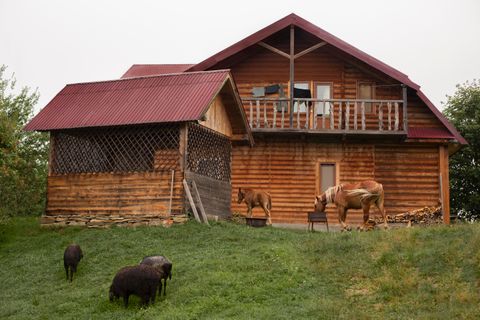
Importance – why Dunster Log Cabins matter today, who they affect, and what problems they solve
They address the growing demand for flexible, functional garden spaces, especially as more people seek home offices, studios, gyms, or retreats. These cabins:
Offer added living and working space without major construction or planning complexity.
Provide energy-efficient, year-round comfort, particularly when insulated models are chosen.
Cater to DIY enthusiasts thanks to kit simplicity, and to those seeking quality, security, and longevity via solid materials, glazing, and locking features.
They benefit homeowners, creatives, remote workers, hobbyists, and anyone looking to make better use of garden space.
Recent Updates – changes, trends or news over the past year
Within the past year (by September 2025), the key updates include:
Continued promotion of fully insulated “Warmalog” cabins with high thermal performance and uPVC French doors featuring 12-point locking systems—ideal for year-round use.
Rising interest in L-Shaped “HellWolf” cabins that adapt to awkward garden corners and provide natural zoning for multipurpose use, with strong glazing and security features.
A growing DIY community sharing build tips and experiences—such as customer-documented cabin builds with added roof and floor insulation, often shared through blogs and video channels.
These developments reflect emphasis on energy efficiency, flexibility, and user empowerment in cabin design and construction.
Laws or Policies – how rules or programs affect Dunster Log Cabins in the UK
Most Dunster Log Cabins are under 2.5 m in height and often do not require planning permission in the UK, which simplifies installation for many homeowners. However, site-specific regulations vary—local authorities may impose different planning rules, building regulations (especially for insulation or electrical installations), or conservation area constraints.
For insulated or multi-room models, additional compliance (such as energy performance or structural standards) may be relevant. Homeowners are encouraged to consult their local planning department before installation to ensure they meet all legal requirements.
Tools and Resources – helpful tools, websites, templates, or services
- Here’s a curated list of useful resources relating to Dunster Log Cabins:
- Dunster House Help Centre – provides detailed information on types, uses, maintenance, and building tips.
- Product Brochures & Buyers’ Guides – outline specifications including wall thickness, glazing, and floor systems.
- Construction Guide Videos – video walkthroughs and tutorials help users build with confidence.
- Blogs & Case Studies – personal build stories offer practical insight into delivery, setup, levelling, and challenges.
- Planning Tools & Local Authority Portals – allow quick checks on planning and building regulations.
- DIY Build Calculators or Templates – useful for planning foundations, insulation, and timber treatment.
- Community Forums – online groups where DIY enthusiasts and cabin owners share advice and experiences.
FAQs
What makes a Dunster Log Cabin different from other garden cabins?
They use high-quality slow-grown spruce, include strong roof and floor boards as standard, feature multi-point locking systems, glazing options, and often include storm braces and pressure-treated bearers—delivering durability, security, and ease of assembly.
Do I need planning permission for a Dunster Log Cabin?
Usually not, if the height is under 2.5 m and installed at the rear of a property. Yet local rules may vary—always check with your local planning authority to confirm requirements for your specific location.
Can these cabins be used year-round?
Yes—especially the insulated models like “Warmalog” that provide thermal comfort, noise reduction, and energy efficiency. They are well-suited to use in all seasons.
How difficult is assembly for a first-time DIYer?
The kit format is designed to be straightforward, with all parts included. A level, square base and helper are key to success. Build videos and guides offer step-by-step assistance, making it manageable even for beginners.
What are the main customization options?
Options include wall thickness (28 mm to 62 mm), glazing types (single or double), uPVC doors and windows, L-shape configurations, side-store attachments, paint finishes, insulation, and additional windows—all customizable to fit purpose and site conditions.
Conclusion
Dunster Log Cabins offer a solid, versatile, and well-engineered solution for anyone seeking to extend living, hobby, or work space into the garden. Grounded in over 30 years of expertise, these cabins deliver quality timber construction, functional design, and user-friendly assembly. Recent trends highlight growing interest in insulated and L-shaped models. While planning rules are generally favourable for smaller cabins, local checks remain essential. With a wealth of support resources—guides, videos, and user stories—Dunster Log Cabins empower homeowners to create inspiring, practical outdoor spaces with confidence.





